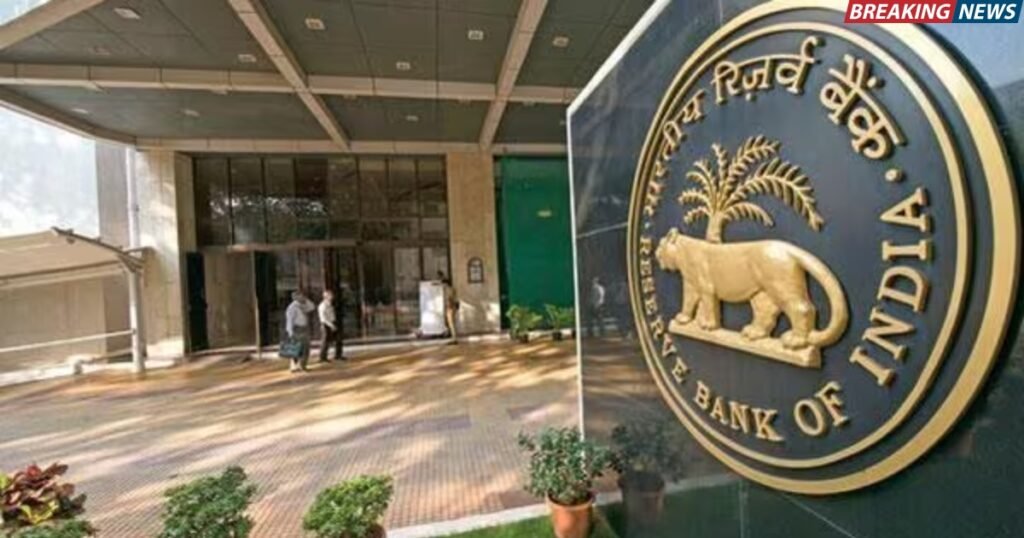
Cutting the repo rate by 50 basis points, the Reserve Bank of India (RBI) dropped it to 5.5%. With this third rate cut in 2025, 100 basis points will be overall lessened this year. By this action, the RBI hopes to increase economic development and lower loan rates for borrowers. Still, there is a drawback as well. The declining interest rates can force fixed deposit (FD) investors to earn less profits.
Key Highlights of the RBI’s Decision
1. Repo Rate Cut:
The RBI cut the repo rate by 50 basis points, bringing it down from 6.0% to 5.5%. With this third rate cut in 2025, 100 basis points will be overall lessened since February. The RBI borrows money to commercial banks at an interest rate known as the repo rate. By cutting it, the RBI hopes banks would lend more, lower lending rates for individuals and companies, and increase expenditure and investment. Particularly in slow-growing times, this action helps the economy.
2. Monetary Policy Stance:
The RBI changed its stance from ‘accommodative’ to ‘neutral’. This means it will now take a more cautious approach when making future policy decisions. Earlier, the RBI focused mainly on supporting growth. Now, it also wants to control inflation and keep the economy balanced. A neutral stance shows that the RBI will look closely at new data before deciding on any more rate changes.
3. Economic Context:
Strong performance was shown in India’s fourth quarter of FY 2024-25 with a 7.4% economic growth. Improved manufacturing, greater consumer spending, and more private investment brought about growth. GDP increase for the whole financial year is projected to be 6.5%. Though the economy is healing nicely, issues including high food prices and world uncertainties still exist. This means the RBI must be vigilant and make deliberate decisions going ahead.
Impact of the Repo Rate Cut on Fixed Deposits
The RBI’s lending interest rate to commercial banks is known as the repo rate. Usually, banks slash both their lending and deposit rates when the RBI reduces this rate. Fixed deposit (FD) rates have been declining from the beginning of 2025.
An SBI Research analysis claims that since February 2025, banks have already cut FD rates by thirty to seventy basis points. At the same time, savings account interest rates have decreased; many banks now provide rates as low as 2.70%, the minimum allowed by most of them. This indicates that FD rates are also moving in the same direction, so depositors are currently getting less returns on their funds.
Simple Strategies for FD Investors During Falling Interest Rates
As interest rates keep going down, FD (Fixed Deposit) investors need to plan smartly to protect their earnings. Here are four easy strategies to follow:
1. Lock in Higher Rates Early
Right now, some small finance banks still offer FDs with interest rates of 8% or more. Big banks offer around 7%. So, this is a good time to lock in these higher rates for a longer period. But be careful with smaller banks—make sure your total deposit stays within ₹5 lakh, which is the amount insured by the DICGC. Locking in now helps you earn more before rates fall further.
2. Spread Your Investments
Don’t keep all your money in FDs. Try putting some money in other safe options like debt mutual funds, government bonds, or RBI bonds. These options might give better returns when FD rates are falling. By spreading your money, you lower your risk and increase your chances of earning more.
3. Try FD Laddering
FD laddering means breaking your money into parts and putting it into FDs with different time periods—for example, 1 year, 2 years, and 3 years. This way, you don’t lock all your money at once. As each FD matures, you can reinvest it based on the latest interest rates. This keeps your money flexible and helps you earn more over time.
4. Use Special Schemes for Senior Citizens
If you’re a senior citizen, banks offer you higher interest—usually 0.25% to 0.5% more than normal rates. You should use this benefit. Also, look at safe options like the Senior Citizen Savings Scheme (SCSS), which gives regular income and higher returns for longer terms.
Impact on Borrowers
The rate drop by the RBI will probably lower monthly loan payments (EMIs). If you have a ₹1 crore house loan for 20 years, for example, a 50 basis point drop might save almost ₹3,000 every month. Should your loan be connected to the External Benchmark Lending Rate (EBLR), you could immediately notice savings. Others may benefit later, during their next loan reset period.
How the Market Reacted
The stock market welcomed the RBI’s decision. The BSE Sensex jumped 589 points to reach 82,031.09, while the Nifty50 went above 24,900. This strong response shows that investors feel positive about the boost this move could give to the economy.
What Experts Said
Before the announcement, economists had mixed opinions. Some expected a smaller cut of 25 basis points, while others, like the State Bank of India, predicted the full 50 basis points. By going for the bigger cut, the RBI showed that it wants to strongly support economic growth, especially during global uncertainty.
Future Outlook
The RBI changed its policy stance from ‘accommodative’ to ‘neutral’, which means it will take a more careful approach in making future decisions. However, if inflation stays low and the economy needs more help, the RBI might cut rates again. So, FD investors should stay alert and adjust their investment plans as needed.
End Note
The RBI’s rate cut helps borrowers by lowering their loan costs. But at the same time, it creates challenges for FD investors because interest earnings drop. Therefore, investors should act wisely by changing their strategies and looking for other investment options to do well in this low-interest environment.


